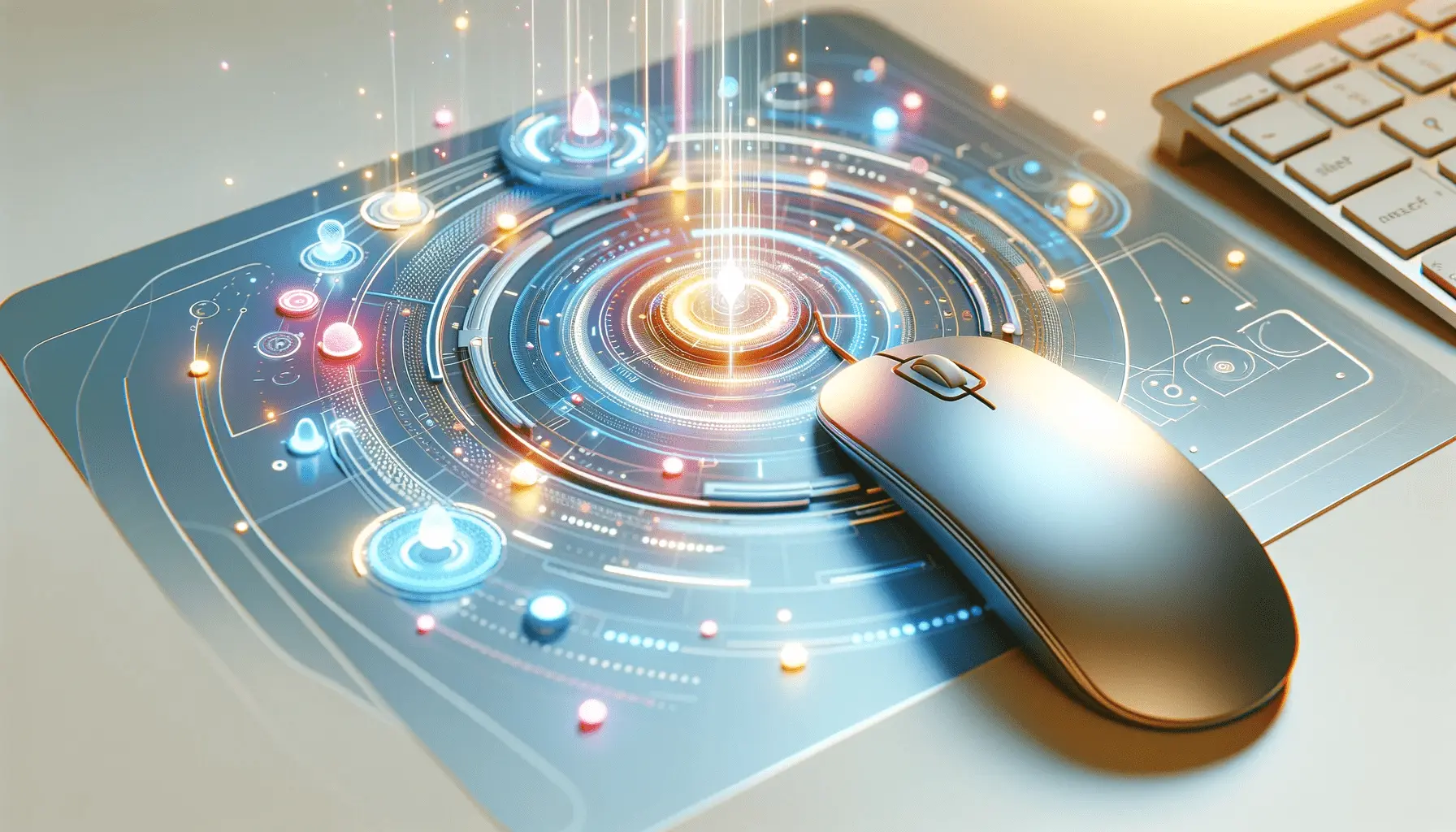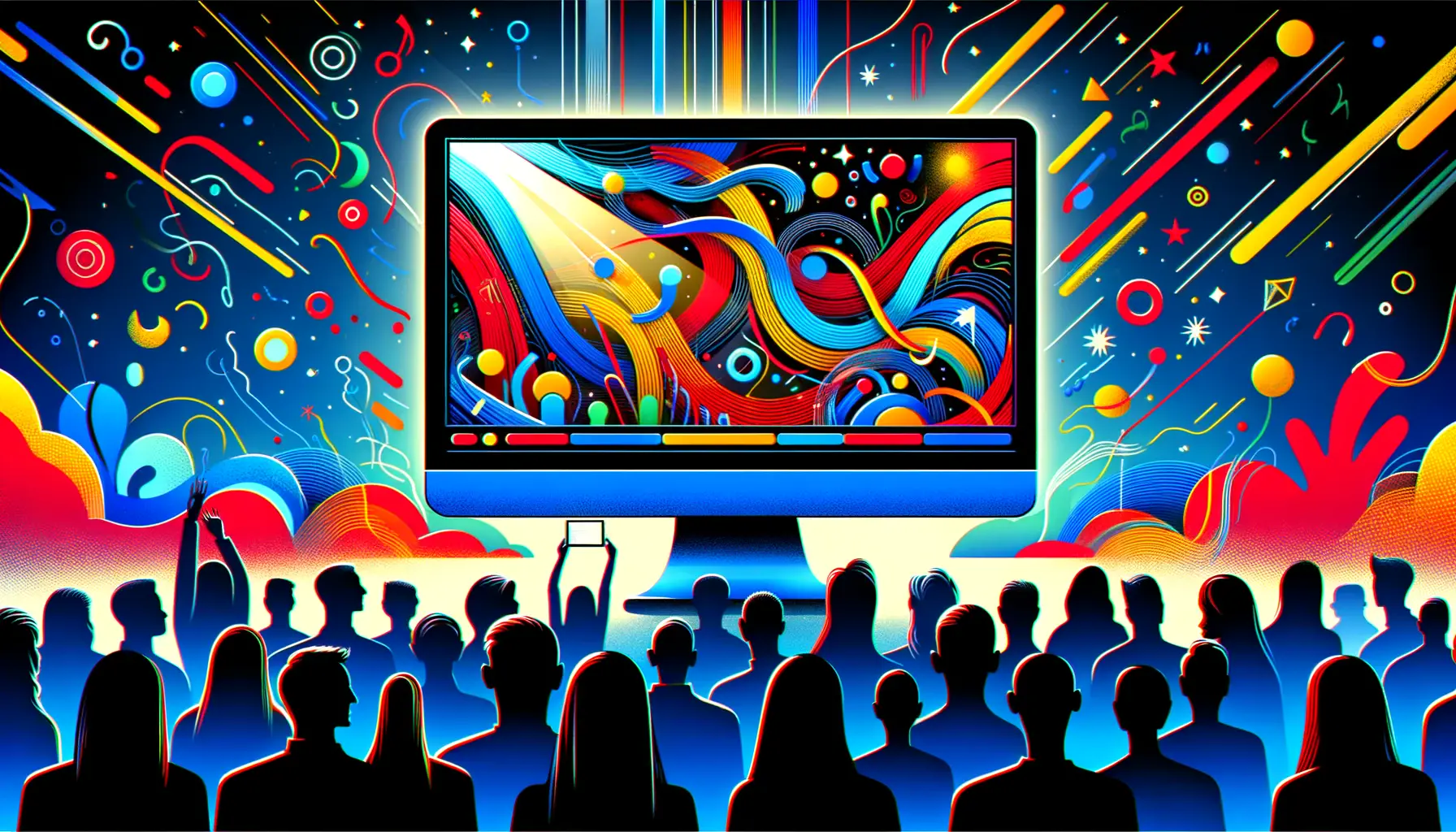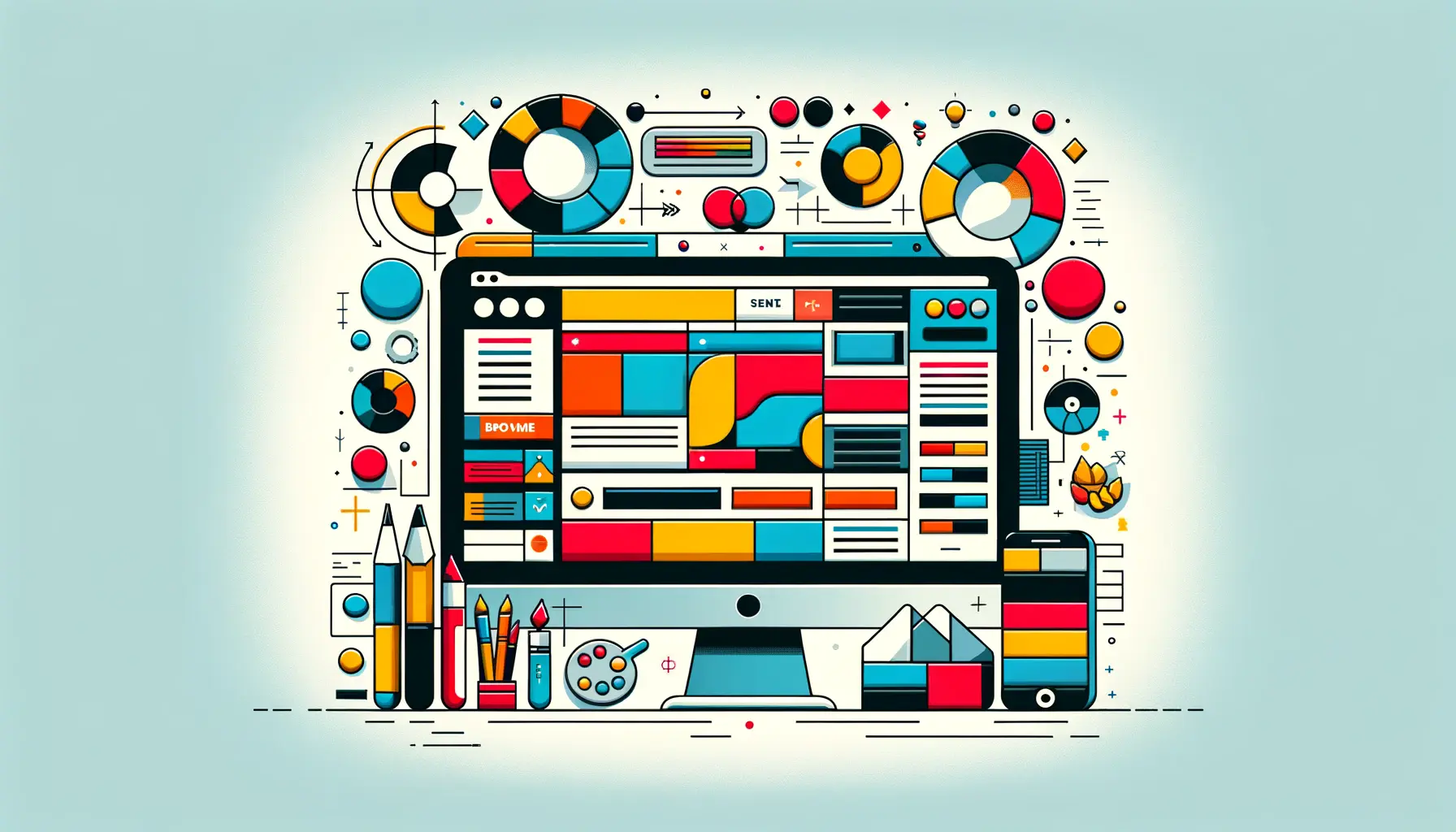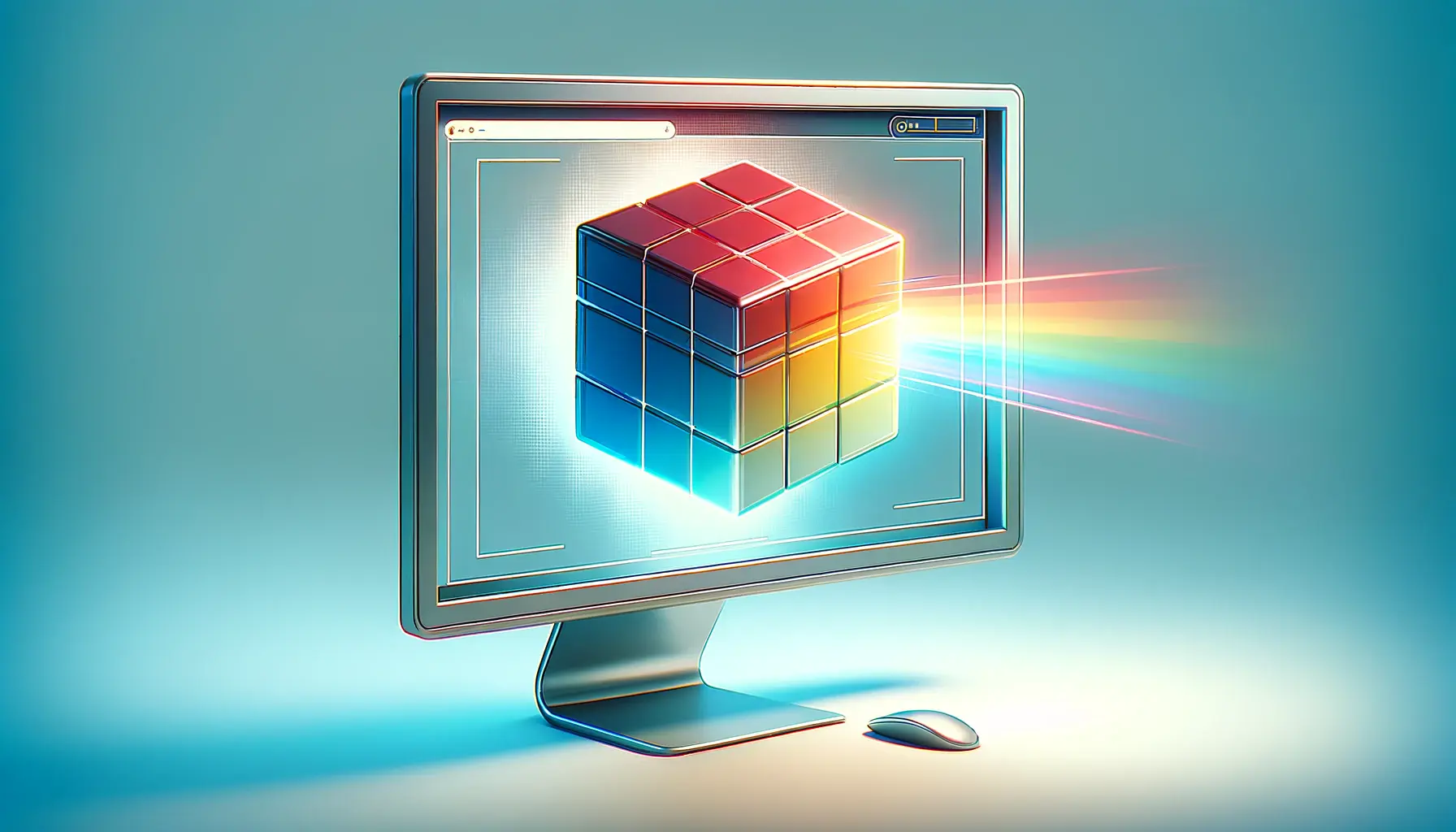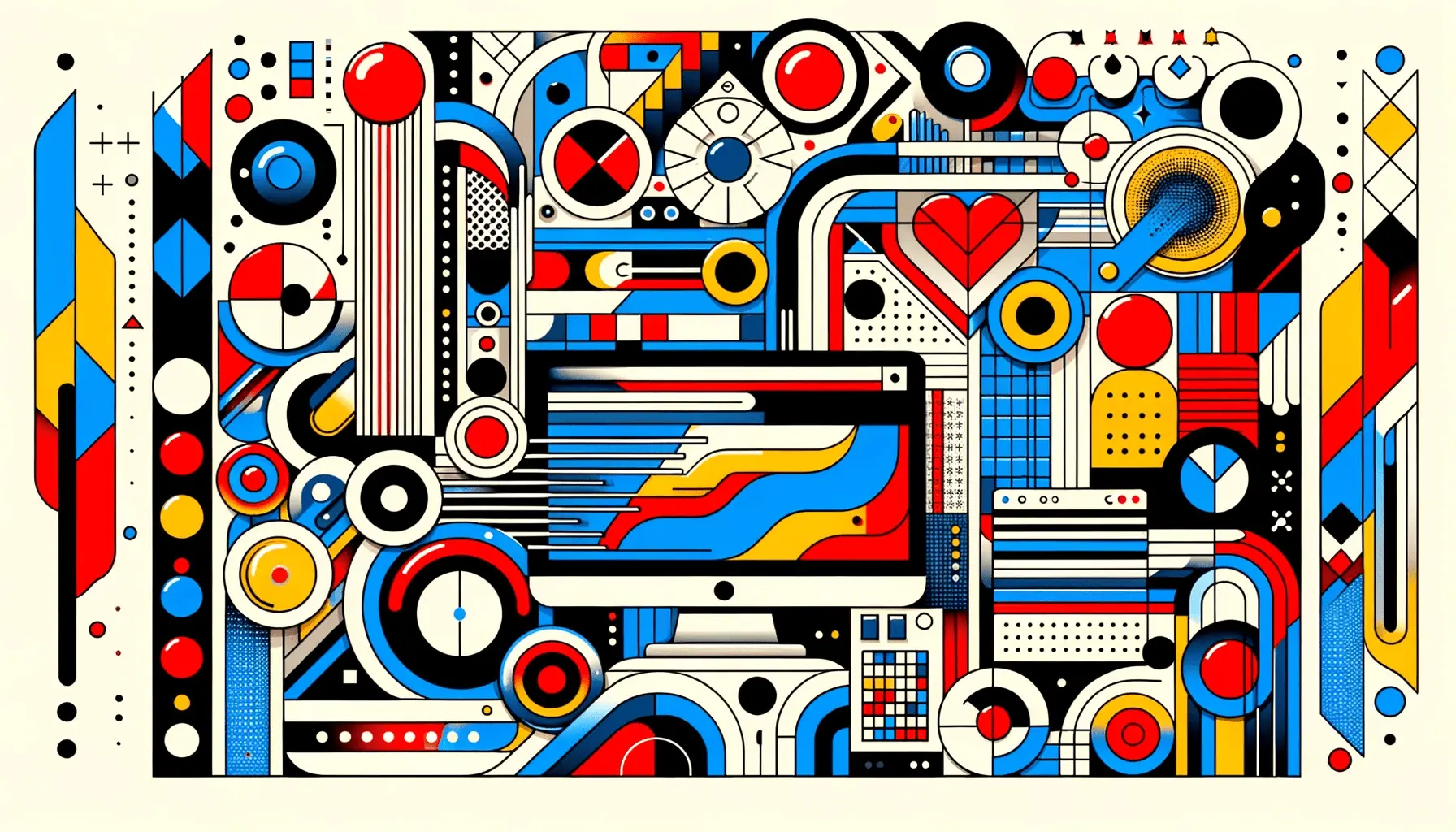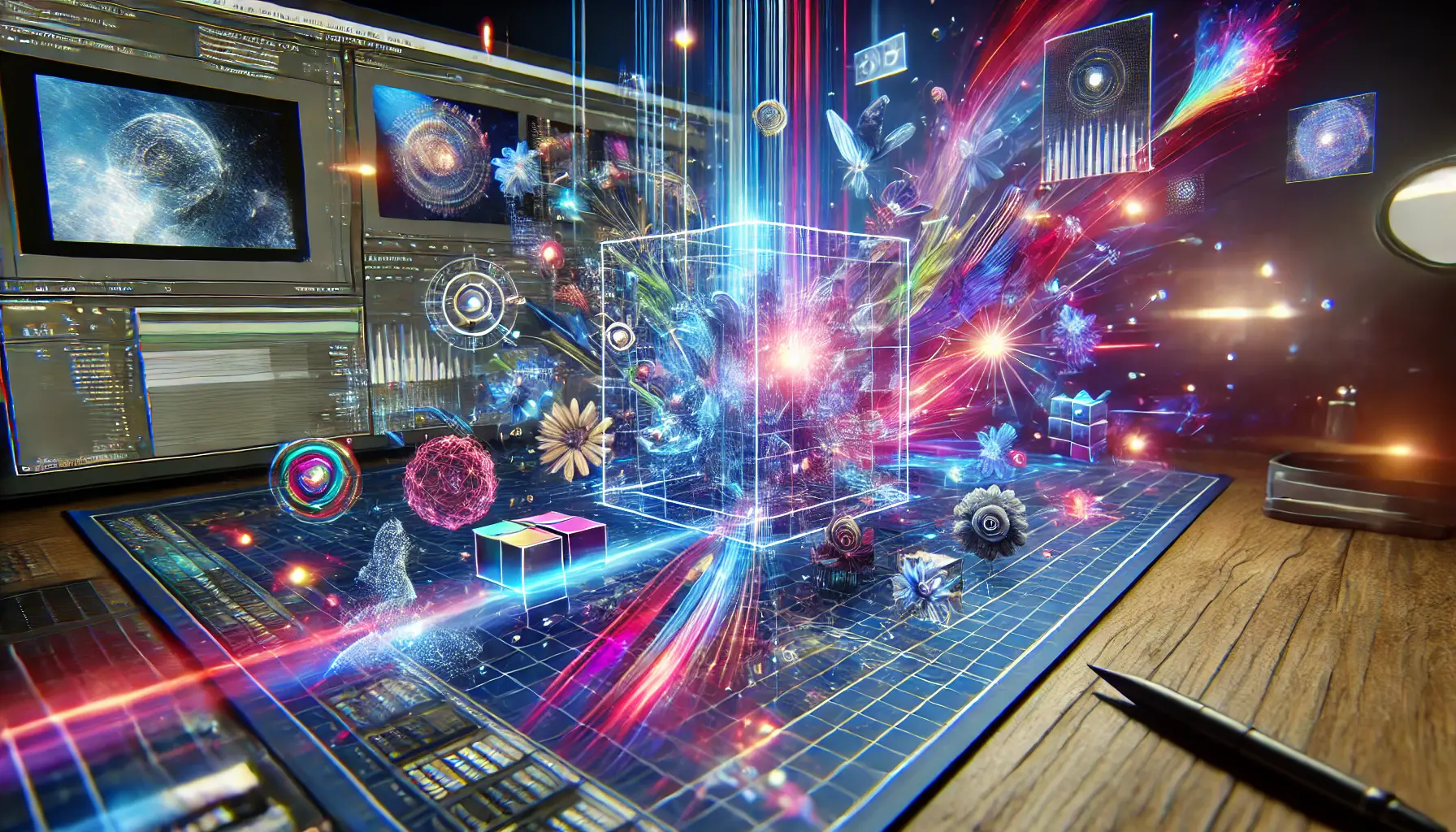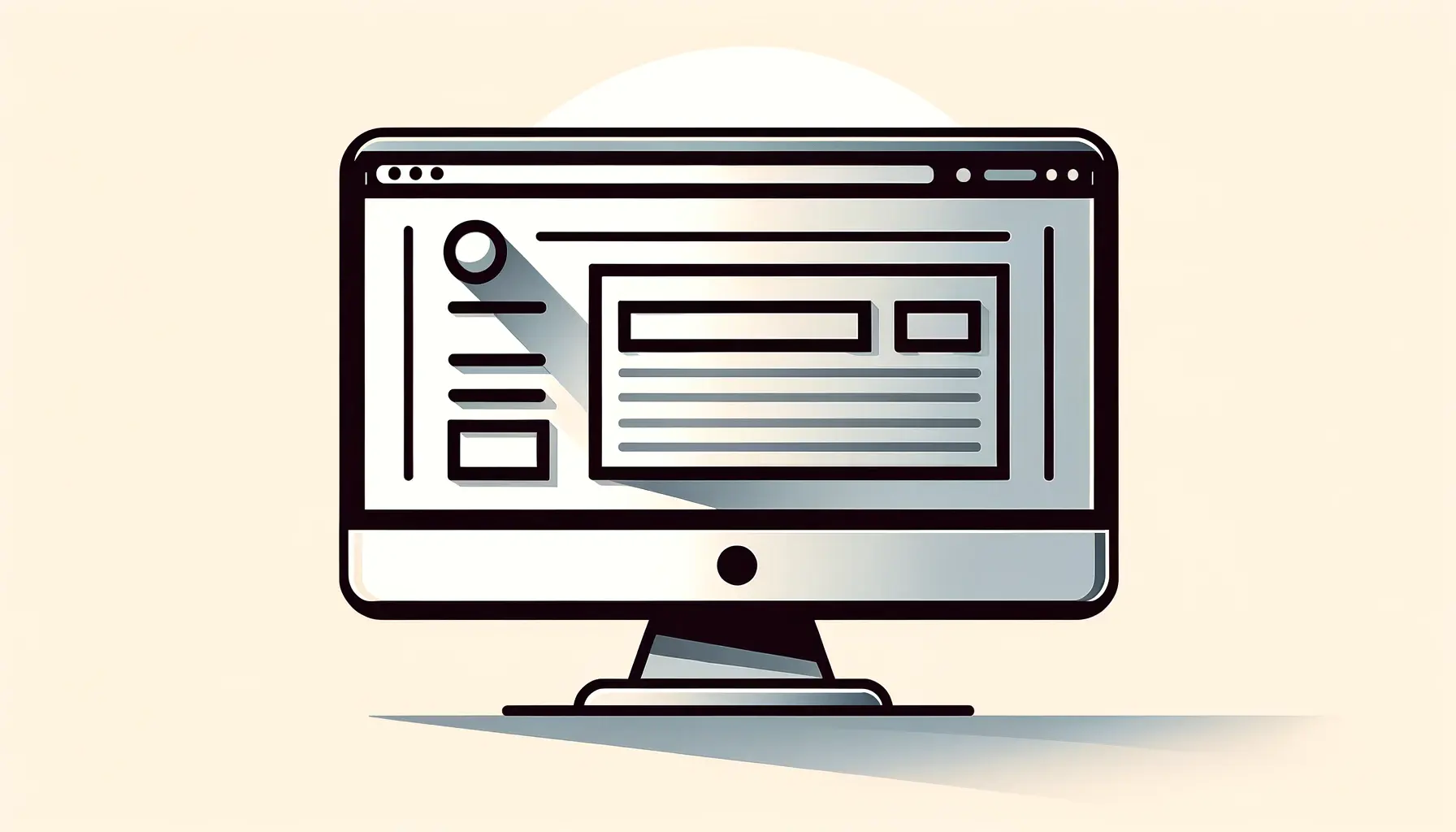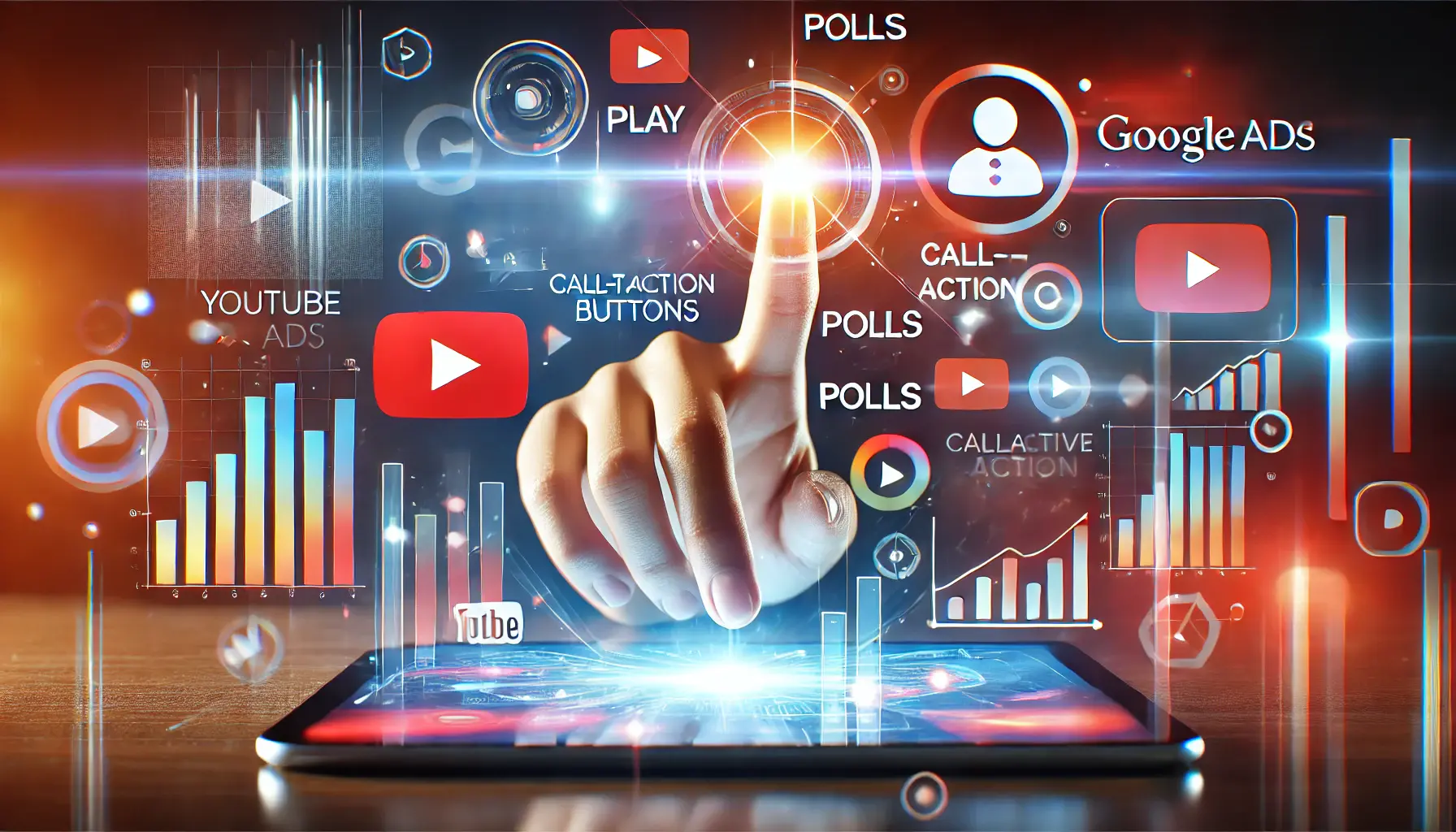In the fast-paced world of web design today, standing out is more important than ever.
As visitors make split-second decisions about whether to stay on a site, it’s the little things—like interactive hover effects—that can make a giant difference.
Delicate animation infuses static text with life, turning a bland user interface into a dynamic, engaging experience.
If you’re a designer, developer, or digital marketer, knowing how to leverage interactive hover effects can greatly enhance the user interaction and performance of your site.
In this article, we’ll dive deep into the power of interactive hover effects, exploring how they shape user experiences and why they’ve become an essential tool in modern web design.
Let’s begin by getting familiar with what they are and how they function in the digital landscape.
- Understanding Interactive Hover Effects in Web Design
- Types of Interactive Hover Effects and Their Applications
- Designing Responsive Hover Effects
- Tools and Frameworks for Creating Interactive Hover Effects
- Best Practices for Implementing Interactive Hover Effects
- Mastering Interactive Hover Effects for Effective Web Design
- Frequently Asked Questions Regarding Interactive Hover Effects
Understanding Interactive Hover Effects in Web Design
Interactive hover effects are visual transitions or modifications that occur when a user places their mouse pointer over an element—a button, image, or text, for example.
Both functional and visually appealing, they aid in user guidance as well as the visual story of a site.
But bright transitions are only half the story—it’s also about user psychology and behavior.
What Are Interactive Hover Effects?
Interactive hover effects are feedback visual systems that respond to user actions.
When one hovers over some content, it may turn color, shift, display new content, or animate.
Interactive hover effects provide users with hints that an item is interactive or clickable.
- They make navigation more usable.
- They add user engagement with visual stimulation.
- They make things clear by highlighting active objects.
Think of them as digital body language—non-verbal cues that complement communication between your site and your visitors.
The Role of Hover States in UX Design
Hover states are not just eye candy.
They play a crucial role in UX design because they give feedback and facilitate the flow of interaction.
Interactive hover effects, when implemented well, create a feeling of control and anticipation for the user.
- They guide users to desired actions (e.g., clicks or form submissions).
- They reduce confusion by pointing to interactive elements.
- They keep users engaged for longer by adding interactivity to static pages.
From a UX point of view, it’s about subtle guidance through movement and design.
Interactive hover effects help users feel more confident and connected during their experience.
How Hover Effects Influence User Interaction
Interactive hover effects have been proven to improve user engagement metrics.
A tasteful animation can encourage users to click, scroll further, or spend more time on a page.
In marketing-oriented web design, these effects are especially powerful at calling attention to calls to action and driving conversions.
When you make interactive hover effects a thoughtful part of your approach, you create a smoother, more pleasant experience that invites users to continue.
It’s about bringing your website to life and making it feel responsive to interaction.
Misconceptions Surrounding Hover Effects
Interactive hover effects are considered by some to be decoration only—hardly the truth.
Others believe they must slow down a site or are not accessible on mobile.
The trick is to design them responsively and use them intentionally.
- Myth: Hover effects are exclusive to desktop sites.
- Fact: Responsive design makes hover-like interactions applicable to touch interfaces too.
- Myth: They always affect performance.
- Fact: Lightweight CSS interactive hover effects barely influence load time when optimized.
Interactive hover effects, done well, add form and function.
They’re not “nice to have”–they’re a necessity in web design today.
Interactive hover effects are more than just eye-catching visuals—they serve as intuitive guides that improve user experience and reinforce interactive elements on a website.
Types of Interactive Hover Effects and Their Applications
Interactive hover effects are where the trickery takes place.
With so many to choose from, the combinations are virtually endless.
From navigation optimization to emphasizing key content, different hover effects have the power to transform the user experience on your site.
Which one to employ depends on your goals—whether more engagement, readability optimization, or highlighting clickable elements.
Let’s break down the most prevalent interactive hover effects and how you can put them to use in your web design approach.
Text and Typography Hover Interactions
Interactive hover text effects are discreet but powerful.
They can add motion, color changes, underlines, or even glitching-like animations to headings, links, and body text.
The effects are particularly beneficial for identifying clickable items or giving static copy a bit of personality.
- Change font color or background on hover
- Animate text with slide-in or fade-in effects
- Add borders, shadows, or glow effects to emphasize importance
These are light and easy to work with using CSS, so they are a typical choice for content-rich sites like blogs and portfolios.
Button and Call-to-Action Hover Styles
Among the most significant applications of interactive hover effects is for calls-to-action (CTAs) and buttons.
These are driving your visitors to conversion, and they need to stand out.
A good hover effect can make a CTA an irresistible clicker.
- Background color transitions for producing visual feedback
- Gentle scale or bounce animations for conveying importance
- Outline-to-fill transitions for a sleek, fashionable look
Using interactive hover effects for CTAs has the potential to make buttons look more visually responsive and appealing, thus enhancing click-through rates.
Hover Effects for Images and Galleries
Images are frequently used with hover effects in galleries, product displays, and feature sections.
They are able to animate to reveal hidden content, enlarge details, or even trigger transitions between images.
- Image zoom-in or zoom-out effects
- Overlay text or icons on hover
- Grayscale to color transitions to indicate active elements
For e-commerce websites, adding interactive hover effects on product images can improve user engagement and allow users to make quicker decisions.
Menu and Navigation Hover Animations
Navigation is a crucial part of user experience, and interactive hover effects can enhance it through the presentation of clear visual cues.
Well-designed hover states in menus inform users about where they are and where they can go next.
- Highlight or border animations of menu items
- Sliding or fading in dropdown transitions
- Icon movement or transformation to indicate interactivity
Good hover feedback in navigation menus prevents confusion and enhances the user experience by making the user journey run smoother overall.
As web design continues to evolve, the demand for more intuitive and responsive interactions grows.
Mastering these types of interactive hover effects not only enhances user experience but also keeps your website looking fresh and modern.
In the next section, we’ll explore how to design these effects to be responsive and mobile-friendly.
Each hover effect—be it on text, buttons, images, or menus—serves a unique role in boosting engagement and clarity. Selecting the right effect aligns the visual style with user intent.
Designing Responsive Hover Effects
In the modern multi-device era, developing interactive hover effects that work perfectly on desktops, tablets, and smartphones is imperative.
Responsive design guarantees that these effects improve user experience without inducing frustration, no matter the device employed.
Let’s discuss essential principles and methods for designing responsive interactive hover effects.
Principles of Responsive Web Design
Responsive web design is aimed at developing flexible layouts and elements that accommodate different screen sizes and orientations.
While applying interactive hover effects, it is important to keep in mind:
- Fluid Grids: Apply relative units such as percentages to layout elements to maintain scalability across devices.
- Flexible Images: Make images scale inside their containing elements without warping.
- Media Queries: Apply CSS rules based on device properties such as width, height, and resolution.
By applying these guidelines, you lay the foundation for useful and beautiful hover effects on every device.
Constructing Mobile-Optimized Hover Effects
Traditional hover effects rely on cursor-driven interactions, which are non-existent on touchscreens.
To solve this:
- Touch Equivalents: Replace hover interactions with touch actions like taps or swipes on touch screens.
- Visible Indicators: Use visual indicators like underlines or color shifts to reveal interactive items so that users can perceive clickable elements without relying on hover states.
- Content Prioritization: Show essential information by default and use interactions to display secondary content, avoiding the over-reliance on hover-based disclosures.
Implementing these approaches ensures interactive hover effects enhance desktop and mobile device usability.
CSS Methods for Flexible Hover States
CSS offers solid functionality for constructing flexible hover states that adapt to different devices:
- :hover and :focus Pseudo-classes: Utilize them in combination to style items both for mouse as well as keyboard use, facilitating accessibility.
- Transitions and Animations: Use CSS transitions to produce smooth, visually appealing hover effects without the need for JavaScript.
- Pointer Events: Use the CSS ‘pointer-events’ property to control how elements respond when receiving user input, enhancing the behavior of interactive hover effects across various devices.
These approaches enable the creation of interactive hover effects that are engaging and responsive on various platforms.
Using Media Queries for Hover Interactions
Media queries allow you to tailor hover interaction based on device capability:
- Detecting Hover Capability: Use the ‘hover’ media feature to apply styles conditionally based on whether a device is capable of hovering.
- Adjusting Interaction Styles: Override or disable hover behavior on non-hovering devices, to provide a uniform user experience.
- Breakpoint-Specific Styling: Apply different hover styles at different screen sizes to provide usability and visual appeal.
By employing media queriesCSS techniques used to apply styles based on device characteristics like screen width or resolution., you can create interactive hover effects that are intelligent enough to respond to the user’s device.
Accessibility Considerations in Responsive Design
Ensuring that interactive hover effects are accessible to all is most critical:
- Keyboard Navigation: Use hover effects that are also triggered by keyboard focus, catering to users who navigate with the keyboard.
- Screen Reader Compatibility: Ensure that hover-triggered content is screen reader compatible, providing descriptive text where necessary.
- Color Contrast: Offer sufficient contrast for hover states so that users with visual disabilities can more easily distinguish interactive items.
Making accessibility a priority within your design process ensures that interactive hover effects help enhance the user experience for all users.
With thoughtful incorporation of these practices, you can have interactive hover effects that are responsive, engaging, and accessible, making your website usability on every device.
Designing hover effects with responsiveness in mind ensures functionality on both desktops and touch devices. Prioritize touch equivalents and media queries to enhance cross-device compatibility.
Tools and Frameworks for Creating Interactive Hover Effects
Creating interactive hover effects can contribute significantly to user interaction on your website.
To achieve these effects in an effective way, a number of tools and frameworks are available, each with some unique features to offer for diverse design needs.
Let us discuss some of the most helpful ones.
CSS for Basic Hover Animations
For basic hover effects, CSS remains a fundamental tool.
Using the :hover pseudo-class, you can create animations using user interaction without the need for additional scripts.
It’s minimal and offers quick load times, ideal for basic transformations like color, scaling, or adding shadows.
- Ease of Use: CSS hover effects are very straightforward to use, with little coding expertise necessary.
- Performance: Being native to browsers, CSS animations are generally performant and do not significantly impact page load times.
- Limitations: While suitable for simple animations, CSS may fall short when creating more complex or sequenced animations.
JavaScript Libraries for Advanced Animations
When your design requires more intricate interactive hover effects, JavaScript libraries offer enhanced capabilities.
These libraries provide greater control over animations, allowing for complex sequences and interactions.
- GSAP (GreenSock Animation Platform): GSAP is renowned for its high-performance animations. It simplifies the process for developers to create complex timelines and sequences. It is well-liked for creating smooth and interactive hover effects.
- Anime.js: A lightweight JavaScript animation library that simplifies the process of creating complicated animations. Anime.js is versatile and capable of animating any quantity of properties, including CSS properties, SVG, DOM attributes, and JavaScript objects.
- Velocity.js: Merging jQuery’s best with CSS transitions’ best, Velocity.js offers fast and feature-rich animations. It’s very useful for UI animations and is performance-optimized for a variety of devices.
Frameworks and Tools for Motion Design
In addition to individual libraries, several frameworks and tools facilitate the incorporation of motion design into web interfaces, taking the process of applying hover effects to the next level.
- Framer: A complete interface design tool to design interactive and animated interfaces. Framer supports a variety of effects, ranging from hover to press to loop to drag, to enable designers to prototype and implement complex interactions easily.
- Webflow: A web design tool to develop responsive websites with inherent animations and interactions without writing code. Webflow also provides a visual interface to attain hover effects as well as other dynamic effects.
Using these libraries and tools, you can introduce interactive hover effects on your website that not only captivate users but also enhance the overall usability and aesthetic value of your website.
Whether you’re using CSS for simplicity or JavaScript libraries like GSAPA high-performance JavaScript library for creating animations on the web. for complex animations, choosing the right tool influences both performance and creative flexibility.
Best Practices for Implementing Interactive Hover Effects
Interactive hover effects can significantly increase user interaction and overall user experience on your website.
To ensure that these effects are intuitive and effective, however, it’s essential to follow best practices.
Let’s consider key factors in successfully implementing interactive hover effects.
Keep Hover Effects Simple and Intuitive
Simplicity is paramount when designing interactive hover effects.
Flashy or complicated animations will confuse the user and detract from the main content.
Use subtle variations that provide clear visual feedback without overwhelming the user.
For example, a small color change or a slight scale effect can provide interactivity cues without confusing the user.
Applying hover effects that are simple does not interfere with the user experience but preserves it.
Ensure Consistency Across the Site
Consistent interactive hover behavior helps users to predict and understand interactions throughout your site.
Implement the same hover behavior for items that have the same function.
- If buttons change color on hover, ensure all buttons behave the same way.
- Apply similar animations to links or interactive cards for uniformity.
Consistent hover behaviors make for a cohesive and natural user experience, reducing the learning curve for users visiting your site.
Optimize for Performance
Performance optimization is critical when using interactive hover effects.
Heavy animations can cause pages to load slowly and have a detrimental effect on user experience.
Use effective coding techniques to minimize impact.
- Utilize CSS for basic animations instead of JavaScript when possible.
- Limit use of large animation libraries unless necessary.
- Test and optimize animations for smooth rendering.
Performance-optimized hover effects make your site responsive and accessible to everyone.
Test for Cross-Browser Compatibility
Different browsers interpret code differently, leading to inconsistencies in how interactive hover effects are displayed.
Testing your hover effects across different browsers is necessary to deliver a consistent experience.
- Test in Chrome, Firefox, Safari, and Edge.
- Use standardized CSS properties supported across browsers.
- Check for animation glitches or rendering delays.
Resolving cross-browser compatibility ensures the integrity and functionality of your website’s interactive elements.
Optimize Hover Effects for Mobile Devices
Mobile phones lack traditional hover capability due to the absence of a cursor.
Therefore, interactive hover effects must be adapted for touch interfaces.
- Replace hover with tap-based interactions where possible.
- Use alternative visual cues, such as icons or labels, to indicate interactivity.
- Ensure responsive behavior on both touch and non-touch devices.
This ensures a consistent experience for users across all platforms.
Prioritize Accessibility
Accessibility should be the core of your design process when utilizing interactive hover effects.
Make sure they are usable for all individuals, including those with disabilities.
- Enable keyboard navigation for all hover-triggered interactions.
- Ensure that hover-revealed content is readable via screen readers.
- Provide sufficient color contrast in hover states to assist visually impaired users.
Accessibility prioritization ensures that your website can be utilized by every user, regardless of ability.
By adopting these best practices, you can have interactive hover effects that enhance user engagement, maintain consistency, and provide an accessible experience for all visitors to your site.
Clear, consistent, and optimized hover effects contribute to usability and performance. Always test across devices and ensure accessibility for all users.
Mastering Interactive Hover Effects for Effective Web Design
The Power of Subtle Interaction
Interactive hover effects aren’t just embellishments—they’re essential elements of modern web design that guide, inform, and engage users.
When employed thoughtfully, they create dynamic visual cues that boost usability and reaffirm a website’s interactivity.
From faint color changes to responsive image animations, the right hover effect can make a minimalist design feel interactive, engaging, and alive.
What We Explored
In this article, we’ve explored the world of interactive hover effects, their purpose, their behavior, and how to use them strategically.
Here’s a quick recap of the key points we covered:
- The purpose of hover effects as the foundation of UX design and how they influence the behavior of users.
- A classification of types of interactive hover effects—from text and buttons to galleries and menus.
- Responsive strategies to making hover effects that are usable across all devices, ranging from mobile touch screens to desktop computers.
- Commonly used tools, frameworks, and libraries that make interactive animations simpler to create.
- Best practices to maintain performance, accessibility, and cross-browser compatibility.
Why It Matters
In today’s competitive online environment, user attention is limited and precious.
Interactive hover effects provide an excellent way of enhancing engagement without visual clutter.
They communicate interactivity, guide user flow, and highlight important actions—all through intuitive visual feedback.
When used consistently and responsively, they can really take the quality of your site’s user experience to the next level.
Takeaways for Designers and Developers
To master interactive hover effects, remember these points as you apply them to your own web projects:
- Start with usability—every hover effect needs to serve a purpose.
- Animate subtly and smoothly to avoid overwhelming the user.
- Make it responsive for every device, particularly mobile.
- Test thoroughly across browsers for performance and consistency.
- Always preserve accessibility, with keyboard navigation and screen reader compatibility.
Looking Ahead
As web technologies evolve, interactive hover effects will only grow more sophisticated and impactful.
Emerging trends like micro-interactionsSmall, subtle animations or responses that enhance user experience by providing feedback or guidance., AI-driven animations, and immersive design approaches will push the boundaries of what hover effects can do.
Staying on top of these developments and applying them judiciously will allow you to create not just stunning-looking websites, but also engaging digital experiences that people love to explore.
By discovering how to harness the energy of interactive hover effects, you allow your web design to interact more completely with users—converting passive browsing into active, meaningful interaction.
Mastery lies in the balance of creativity and functionality. Subtle, purposeful hover interactions can dramatically enhance a site’s professionalism and user engagement.
Quality web design is key for a great website! Check out our service page to partner with an expert web design agency.
Frequently Asked Questions Regarding Interactive Hover Effects
Interactive hover effects are quite popular in web designing, with some of the more frequently asked questions we address below in an attempt to increase your know-how and implementation of the effect.
Interactive hover effects are visual changes that occur due to the hover of a cursor over an element since they provide users with additional interaction while providing them with instant feedback.
Hover effects help users by indicating interactive elements, improving navigation, and improving the intuitive and responsive qualities of the interface.
Regular hover effects do not work on touchscreens, but similar experiences can be achieved by taking advantage of touch-based gestures to mimic hover capabilities.
Not necessarily; interactive hover effects need to be made accessible by providing keyboard navigability and alternative hints for the disabled.
Too many or inefficient hover effects can render a website sluggish; it is essential to employ them wisely and optimize animations for performance.
Employing hover effects on non-clickable items confuses users; it is better to use hover effects only for interactive elements.
Make use of cross-browser testing tools so that interactive hover effects are rendered uniformly on other browsers and devices.
Yes, combining hover effects with other animations can be employed to design interactive effects, but ensure that they do not overwhelm or confuse the user.
Libraries like CSS, JavaScript libraries (e.g., jQuery), and frameworks (e.g., Bootstrap) offer functionality to create several interactive hover effects.
